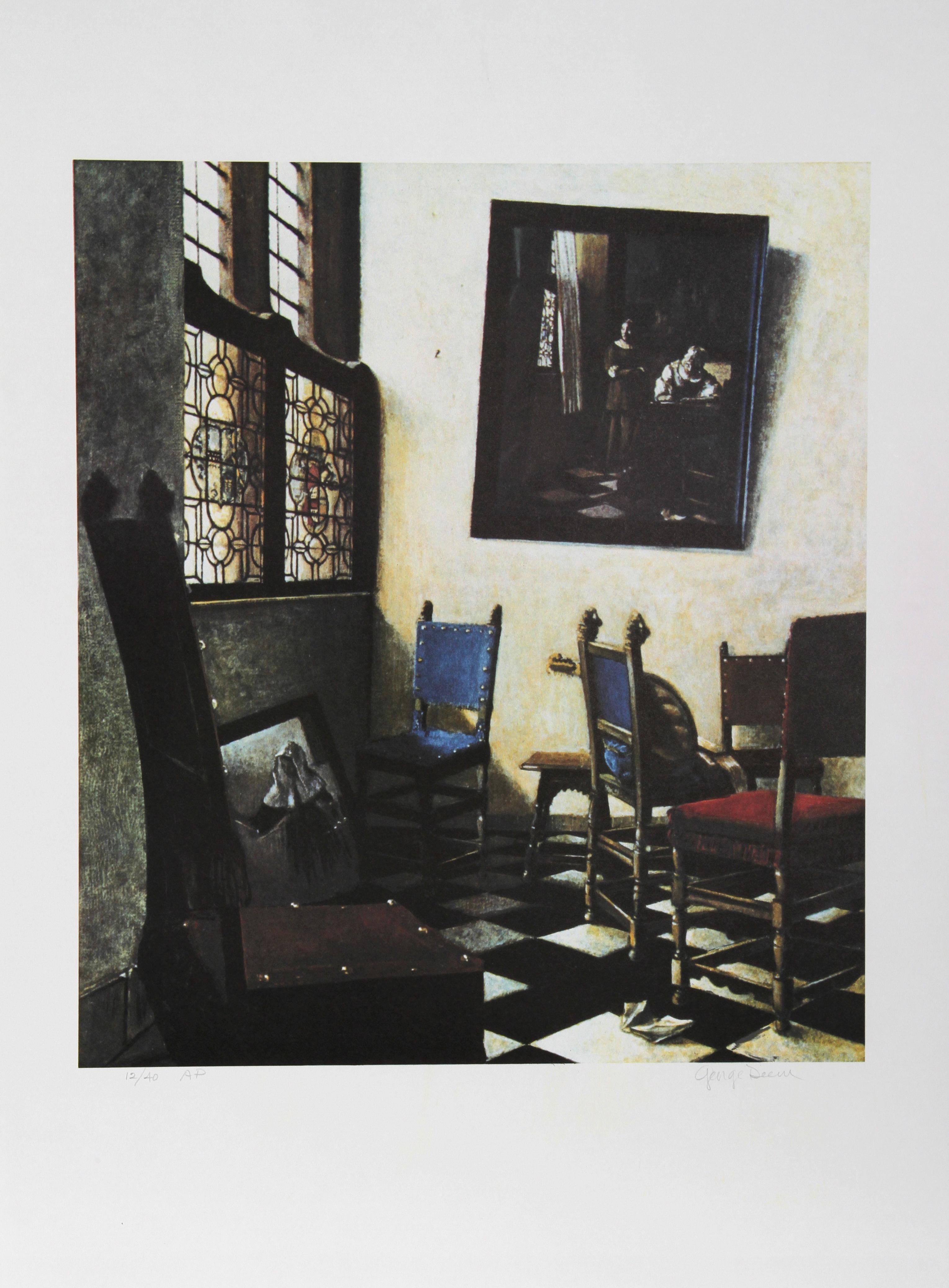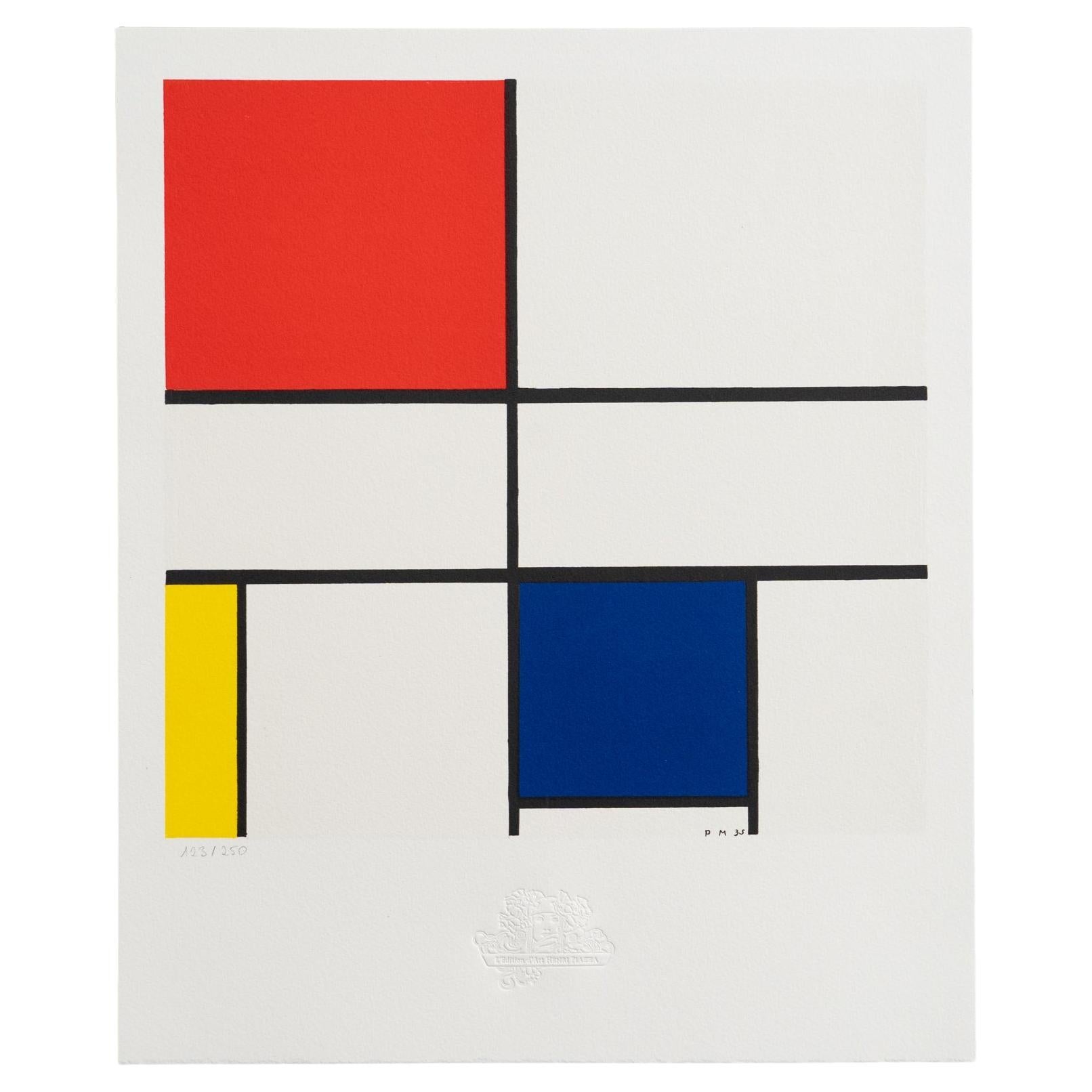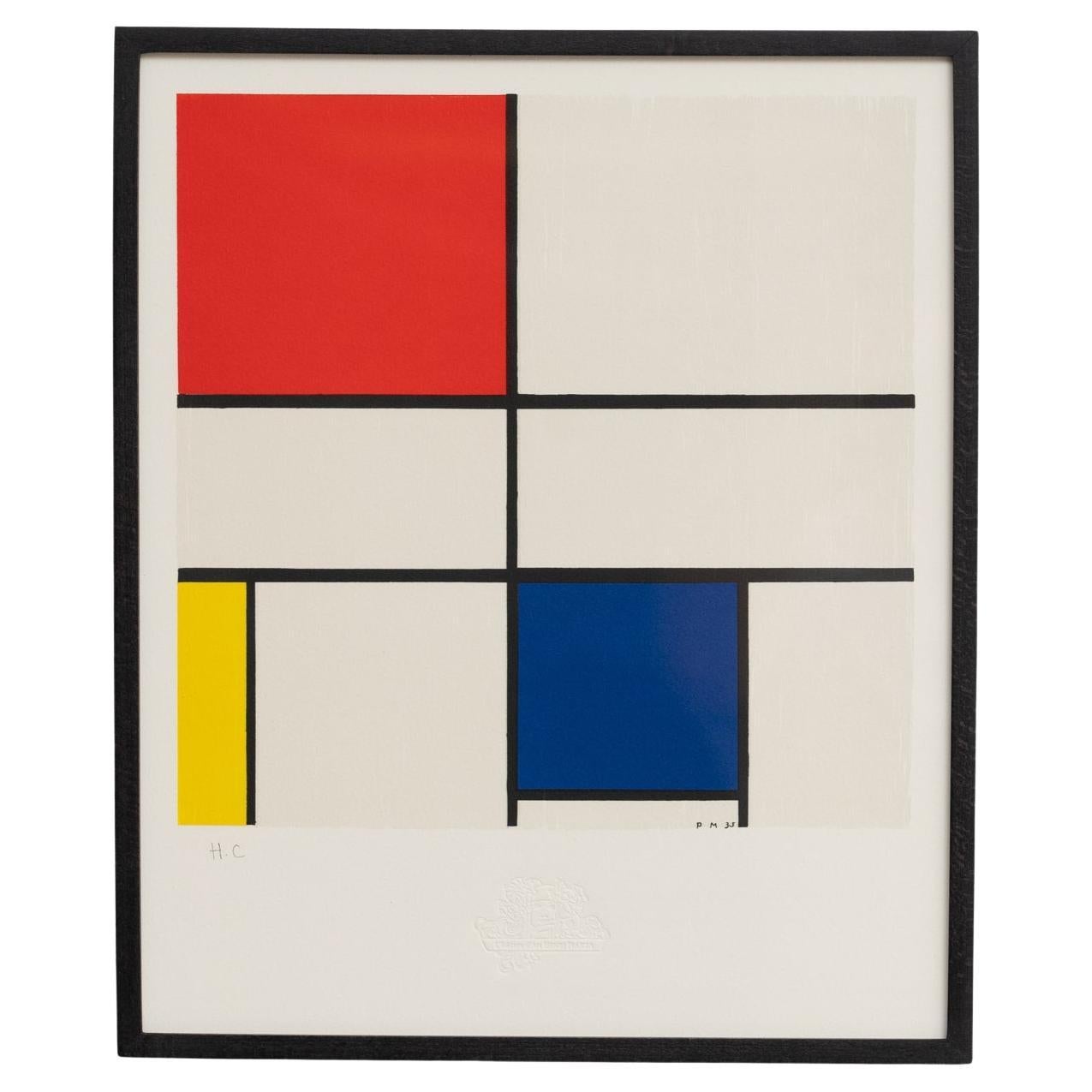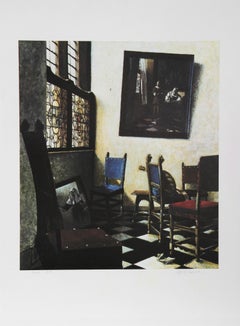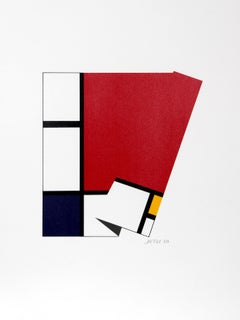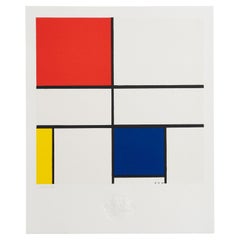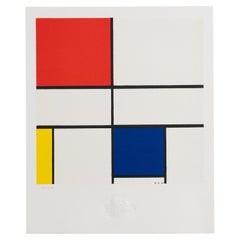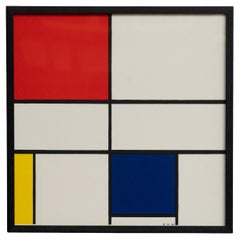Items Similar to Mondrian with Vermeer, Lithograph by George Deem
Want more images or videos?
Request additional images or videos from the seller
1 of 6
George DeemMondrian with Vermeer, Lithograph by George Deem1978
1978
$700
£531.67
€614.25
CA$981.08
A$1,098.01
CHF 573.08
MX$13,390.03
NOK 7,334.59
SEK 6,943.13
DKK 4,584.08
Shipping
Retrieving quote...The 1stDibs Promise:
Authenticity Guarantee,
Money-Back Guarantee,
24-Hour Cancellation
About the Item
Artist: George Deem, American (1932 - 2008)
Title: Mondrian with Vemeer
Year: 1978
Medium: Lithograph with Silkscreen, signed and numbered in pencil
Edition: 300, AP 40
Image Size: 21.5 x 19 inches
Paper Size: 30 in. x 22 in. (76.2 cm x 55.88 cm)
- Creator:George Deem (1932 - 2008, American)
- Creation Year:1978
- Dimensions:Height: 30 in (76.2 cm)Width: 22 in (55.88 cm)
- Medium:
- Movement & Style:
- Period:
- Framing:Framing Options Available
- Condition:
- Gallery Location:Long Island City, NY
- Reference Number:1stDibs: LU4664021742
About the Seller
4.9
Platinum Seller
Premium sellers with a 4.7+ rating and 24-hour response times
Established in 1979
1stDibs seller since 2014
3,048 sales on 1stDibs
Typical response time: 1 hour
- ShippingRetrieving quote...Shipping from: Long Island City, NY
- Return Policy
Authenticity Guarantee
In the unlikely event there’s an issue with an item’s authenticity, contact us within 1 year for a full refund. DetailsMoney-Back Guarantee
If your item is not as described, is damaged in transit, or does not arrive, contact us within 7 days for a full refund. Details24-Hour Cancellation
You have a 24-hour grace period in which to reconsider your purchase, with no questions asked.Vetted Professional Sellers
Our world-class sellers must adhere to strict standards for service and quality, maintaining the integrity of our listings.Price-Match Guarantee
If you find that a seller listed the same item for a lower price elsewhere, we’ll match it.Trusted Global Delivery
Our best-in-class carrier network provides specialized shipping options worldwide, including custom delivery.More From This Seller
View AllVermeer's Moving, Pop Art Lithograph by George Deem
By George Deem
Located in Long Island City, NY
Artist: George Deem, American (1932 - 2008)
Title: Vermeer's Moving
Year: circa 1979
Medium: Lithograph, signed and numbered in pencil
Edition: 300, AP 40
Image Size: 20.5 x 18 inche...
Category
1970s Conceptual Figurative Prints
Materials
Lithograph
Dutch Portrait in Vermeer's Easel, Lithograph by George Deem
By George Deem
Located in Long Island City, NY
Artist: George Deem
Title: A Dutch Portrait in Vermeer's Easel
Year: 1979
Medium: Lithograph, signed and numbered in pencil
Edition: 300, AP 40
Image Size: 20.5 x 18 inches
Paper Si...
Category
1970s Conceptual Figurative Prints
Materials
Lithograph
Primary Vermeer, Lithograph by George Deem
By George Deem
Located in Long Island City, NY
Artist: George Deem
Title: Primary Vermeer
Year: circa 1979
Medium: Lithograph, signed and numbered in pencil
Edition: 300, AP 40
Image Size: 19 x 17 inches
Paper Size: 25.5 in. x 2...
Category
1970s Conceptual Figurative Prints
Materials
Lithograph
Piece de Resistance (Mondrian), Pop Art Screenprint by Jim Jacobs
By Jim Jacobs
Located in Long Island City, NY
Artist: Jim Jacobs, American (b. 1945)
Title: Piece de Resistance (Mondrian)
Year: c. 1980
Medium: Screenprint, signed and numbered in pencil
Editi...
Category
1980s De Stijl Abstract Prints
Materials
Screen
Sienna Vermeer, Pop Art Lithograph by George Deem
By George Deem
Located in Long Island City, NY
Artist: George Deem
Title: Sienna Vermeer
Year: 1978
Medium: Lithograph, signed and numbered in pencil
Edition: 300, AP 40
Image Size: 19 x 21 inches
Paper Size: 22 in. x 30 in. (55...
Category
1970s Conceptual Figurative Prints
Materials
Lithograph
George Washington Vermeer, Lithograph by George Deem
By George Deem
Located in Long Island City, NY
George Washington Vermeer
George Deem, American (1932–2008)
Date: 1978
Lithograph, signed and numbered in pencil
Edition of AP 40
Image Size: 22 x 19 inches
Size: 30 in. x 22 in. (76...
Category
1970s Interior Prints
Materials
Lithograph
You May Also Like
Piet Mondrian: "Composition C n°III in Red, Blue, and Yellow" Lithography
By Piet Mondrian
Located in Barcelona, Barcelona
Piet Mondrian: "Composition C n°III in Red, Blue, and Yellow" - Signed Lithography
Elevate your collection with this stunning lithograph by Piet Mondrian, titled "Composition C n°III in Red, Blue, and Yellow." This 8-color passage lithograph is signed in the plate and marked HC, printed on Arches vellum paper measuring 38.5 x 32 cm. Published by Edition d'Art Henri Piazza, it is based on the eponymous 1935 painting and authenticated by the publisher's dry stamp. The lithograph was printed in an edition of 250 copies, plus a few HC proofs, and includes the publisher's certificate.
This artwork is in excellent condition, with minor wear consistent with its age and use, preserving a beautiful patina. It is framed in a high-quality black lacquered wood frame. Dimensions: D 3 cm x W 33 cm x H 40 cm.
Ideal for collectors and art enthusiasts, this Piet Mondrian lithograph...
Category
2010s French Mid-Century Modern Prints
Materials
Paper
Piet Mondrian: "Composition C n°III in Red, Blue, and Yellow" Lithography
By Piet Mondrian
Located in Barcelona, Barcelona
Piet Mondrian: "Composition C n°III in Red, Blue, and Yellow" - Signed Lithography
Elevate your collection with this stunning lithograph by Piet Mondrian, titled "Composition C n°III in Red, Blue, and Yellow." This 8-color passage lithograph is signed in the plate and marked HC, printed on Arches vellum paper measuring 38.5 x 32 cm. Published by Edition d'Art Henri Piazza, it is based on the eponymous 1935 painting and authenticated by the publisher's dry stamp. The lithograph was printed in an edition of 250 copies, plus a few HC proofs, and includes the publisher's certificate.
This artwork is in excellent condition, with minor wear consistent with its age and use, preserving a beautiful patina. It is framed in a high-quality black lacquered wood frame. Dimensions: D 3 cm x W 33 cm x H 40 cm.
Ideal for collectors and art enthusiasts, this Piet Mondrian lithograph...
Category
2010s French Mid-Century Modern Prints
Materials
Paper
Piet Mondrian: "Composition C n°III in Red, Blue, and Yellow" Lithography
By Piet Mondrian
Located in Barcelona, Barcelona
Piet Mondrian: "Composition C n°III in Red, Blue, and Yellow" - Signed Lithography
Elevate your collection with this stunning lithograph by Piet Mondrian, titled "Composition C n°III in Red, Blue, and Yellow." This 8-color passage lithograph is signed in the plate and marked HC, printed on Arches vellum paper measuring 38.5 x 32 cm. Published by Edition d'Art Henri Piazza, it is based on the eponymous 1935 painting and authenticated by the publisher's dry stamp. The lithograph was printed in an edition of 250 copies, plus a few HC proofs, and includes the publisher's certificate.
This artwork is in excellent condition, with minor wear consistent with its age and use, preserving a beautiful patina. It is framed in a high-quality black lacquered wood frame. Dimensions: D 3 cm x W 33 cm x H 40 cm.
Ideal for collectors and art enthusiasts, this Piet Mondrian lithograph...
Category
2010s French Mid-Century Modern Prints
Materials
Paper
Piet Mondrian: "Composition C n°III in Red, Blue, and Yellow" Lithography
By Piet Mondrian
Located in Barcelona, Barcelona
Piet Mondrian: "Composition C n°III in Red, Blue, and Yellow" Lithograph
Enhance your collection with this iconic signed lithograph by Piet Mondrian, titled "Composition C n°III in...
Category
2010s French Mid-Century Modern Prints
Materials
Paper
Piet Mondrian: "Composition C n°III in Red, Blue, and Yellow" Lithography
By Piet Mondrian
Located in Barcelona, Barcelona
Piet Mondrian: "Composition C n°III in Red, Blue, and Yellow" - Signed Lithography
Elevate your collection with this stunning lithograph by Piet Mondrian, titled "Composition C n°II...
Category
2010s French Mid-Century Modern Prints
Materials
Paper
"Composition en bleu b" serigraph
By (after) Piet Mondrian
Located in Henderson, NV
Medium: serigraph (after the 1917 painting). Printed in a limited edition of 300 in 1957 at the atelier Arcay and issued by Galerie Denise René. Printed on Bristol San Francisco smoo...
Category
1950s Prints and Multiples
Materials
Screen
